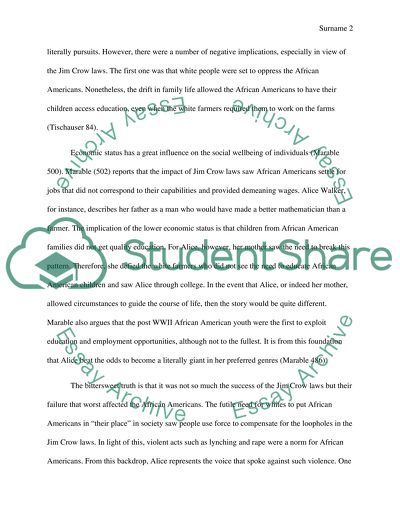Cite this document
(“Alice Walker research Paper Example | Topics and Well Written Essays - 1500 words”, n.d.)
Retrieved from https://studentshare.org/literature/1454375-alice-walker-how-did-growing-up-the-jim-crow-era
Retrieved from https://studentshare.org/literature/1454375-alice-walker-how-did-growing-up-the-jim-crow-era
(Alice Walker Research Paper Example | Topics and Well Written Essays - 1500 Words)
https://studentshare.org/literature/1454375-alice-walker-how-did-growing-up-the-jim-crow-era.
https://studentshare.org/literature/1454375-alice-walker-how-did-growing-up-the-jim-crow-era.
“Alice Walker Research Paper Example | Topics and Well Written Essays - 1500 Words”, n.d. https://studentshare.org/literature/1454375-alice-walker-how-did-growing-up-the-jim-crow-era.


